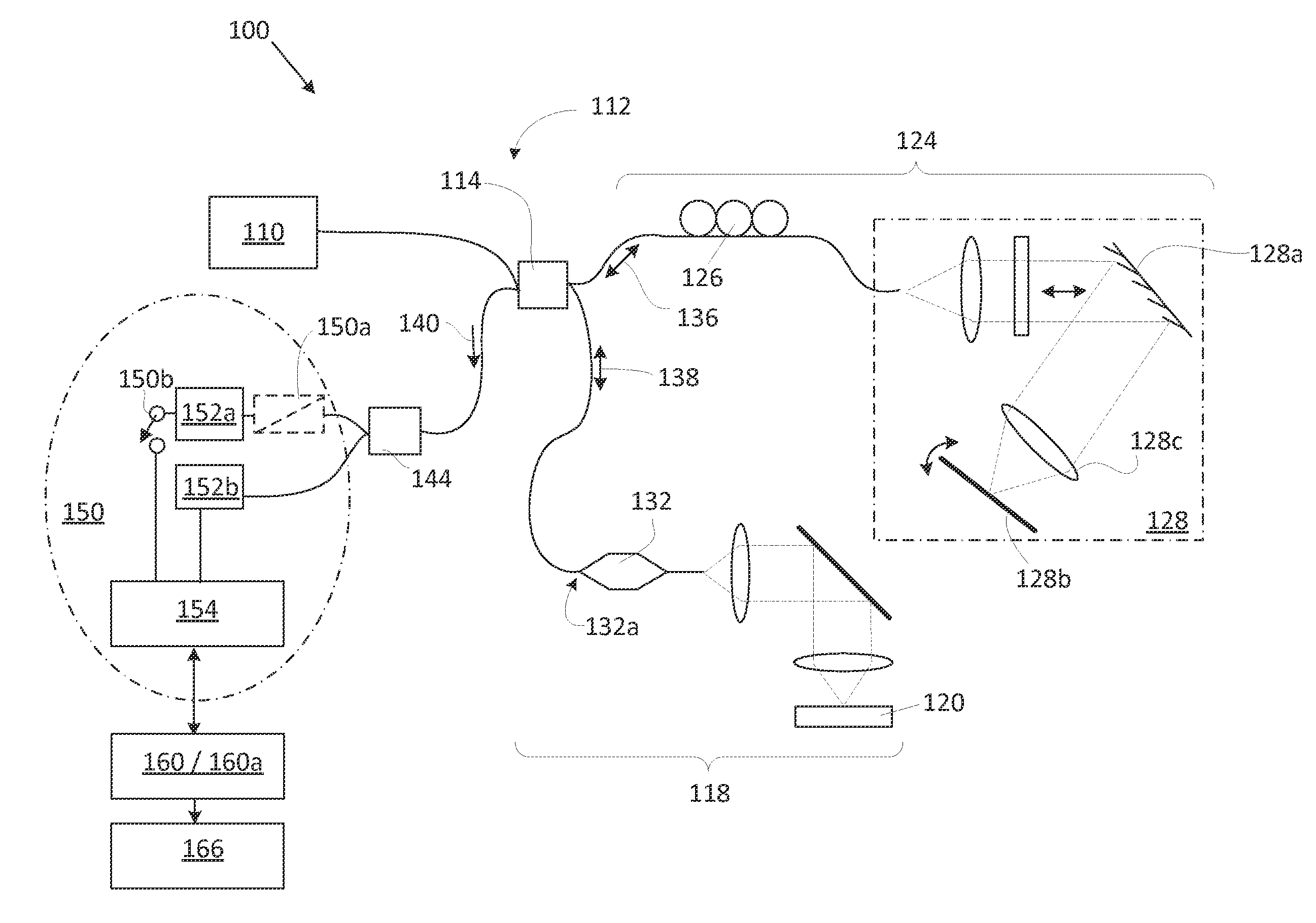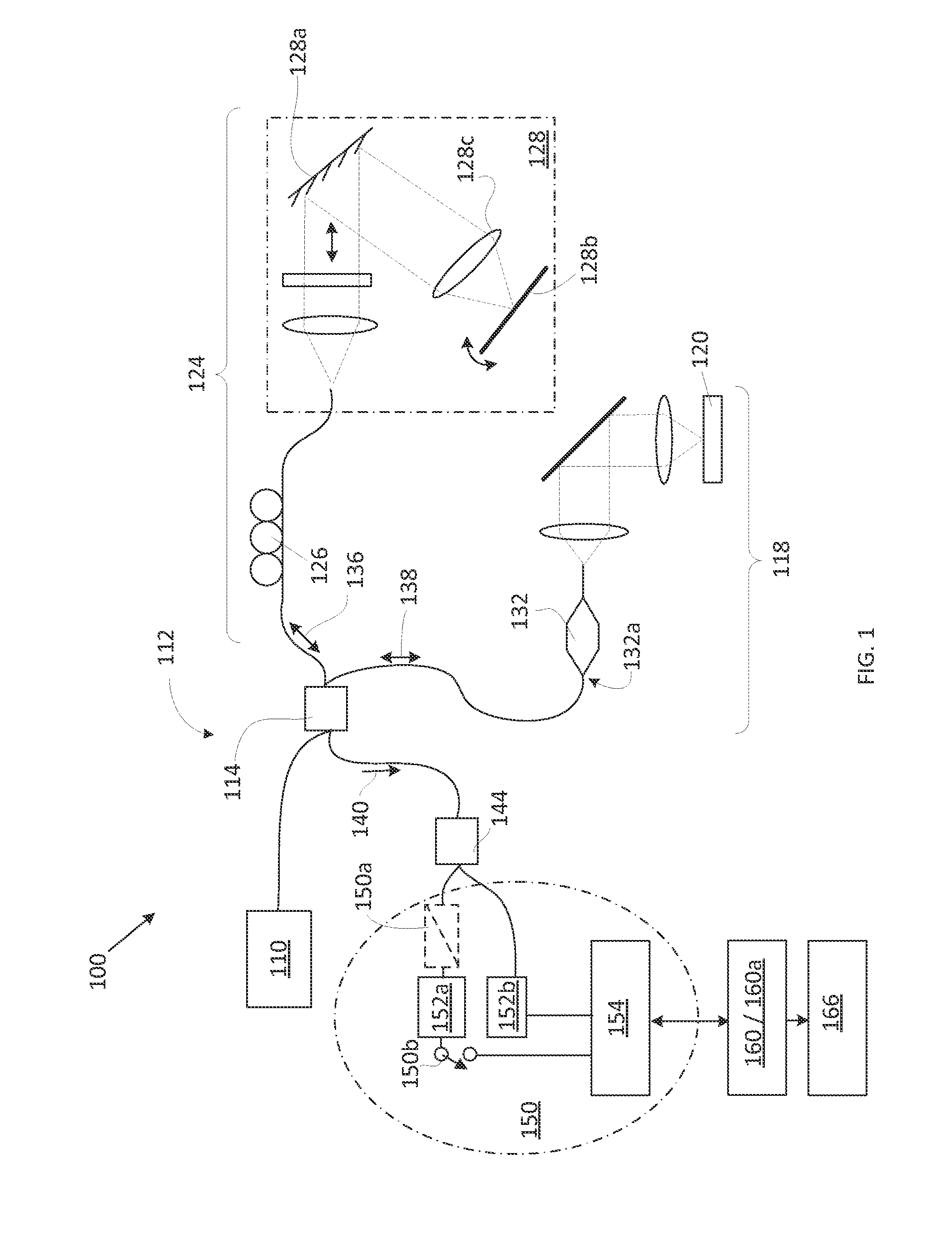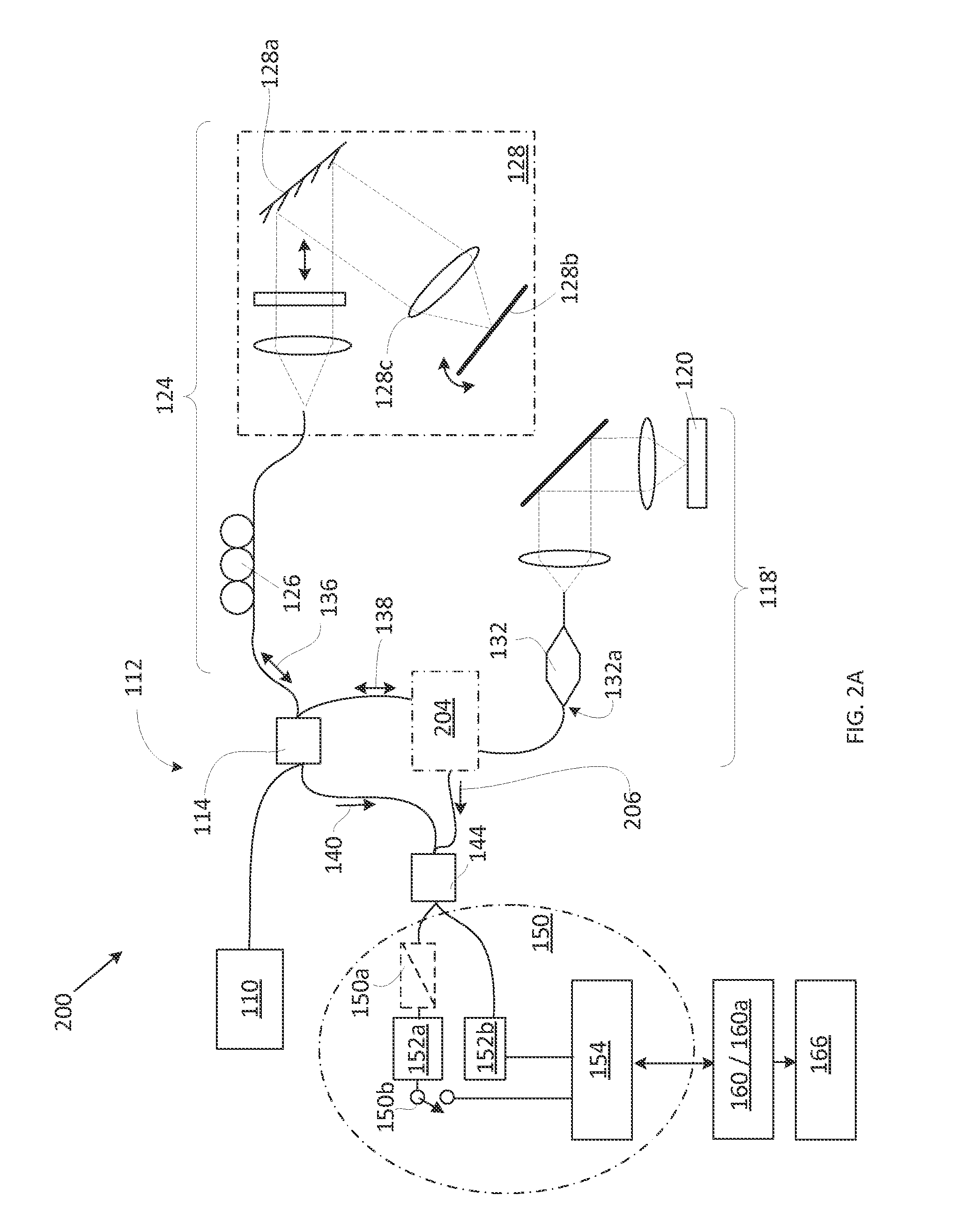Determination of a material characteristics with the use of second-order photon correlations
a material characteristic and photon correlation technology, applied in the direction of phase-affecting property measurement, instruments, measurement devices, etc., can solve the problems of occlusion of a relatively small percentage of the lumen, poor ability of the oct to distinguish between intravascularly unstable lipid plaque material and non-lipid plaque material, and inability to perform interventional treatments on otherwise visible thin-capped intravascular plaques
- Summary
- Abstract
- Description
- Claims
- Application Information
AI Technical Summary
Benefits of technology
Problems solved by technology
Method used
Image
Examples
embodiment 100
[0040]The embodiment 100 also includes an optional means (not shown) of blocking a beam in one of the arms of the mismatched interferometer 132. In an embodiment where there is a sub-interferometer or with a double reflector, if one arm is closed or otherwise made into a single reflection, LCI or OCT data can be collected. It is noted that, generally speaking, OCT is LCI scanned in two or three dimensions. With respect to the double reflector, if the top layer is linearly polarized, for example, and there is a linear polarization filter in the arm, when both arm aligned, a double reflection is achieved. When they are perpendicular, only a reflection off the top layer is achieved so the system is in the LCI or OCT mode.
[0041]Light corresponding to the interferogram 140 is further split and by a second beam-splitter 144 (as shown, a fiber-optic 50:50 coupler) and delivered to an optical detection system 150 that is configured to be switchable between a single-channel detection system ...
embodiment 250
[0043]Yet another related embodiment 250 is shown schematically in FIG. 2C. Here, a dual-channel interferometric setup is shown, wherein the isolator 212 and the coupler 214 are used in operation with a DBD mode (and not used when the detection system operated in a single-channel detection mode).
[0044]The sample 120 may include two spatially-separated reflective surfaces (a double reflector). In one implementation, for example, the sample 120 may incorporate two optically-thick (˜1 mm or thicker) glass slides a gap (about 10 to 50 micron wide) between which is filed with a chosen medium such as lipid material and non-lipid material (for example, water or air). However, due to the fact that processing of optical data in embodiments of the invention is performed in time domain rather than in spatial domain, embodiments of the invention make the presence of a single reflective surface in a sample sufficient for determination of the SOC data. Accordingly, in a related embodiment the sam...
PUM
| Property | Measurement | Unit |
|---|---|---|
| diameter | aaaaa | aaaaa |
| time | aaaaa | aaaaa |
| length | aaaaa | aaaaa |
Abstract
Description
Claims
Application Information
 Login to View More
Login to View More - R&D
- Intellectual Property
- Life Sciences
- Materials
- Tech Scout
- Unparalleled Data Quality
- Higher Quality Content
- 60% Fewer Hallucinations
Browse by: Latest US Patents, China's latest patents, Technical Efficacy Thesaurus, Application Domain, Technology Topic, Popular Technical Reports.
© 2025 PatSnap. All rights reserved.Legal|Privacy policy|Modern Slavery Act Transparency Statement|Sitemap|About US| Contact US: help@patsnap.com



